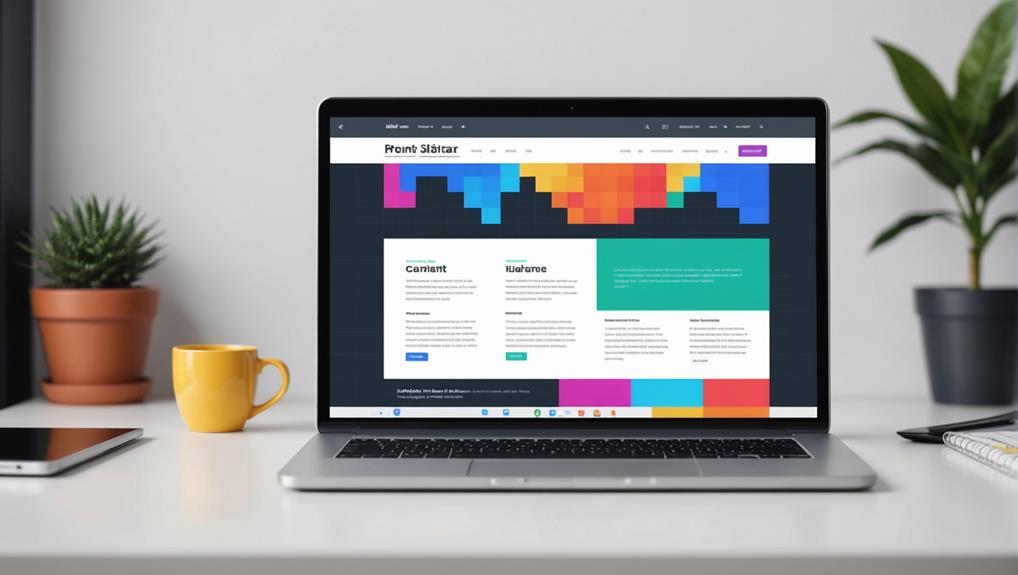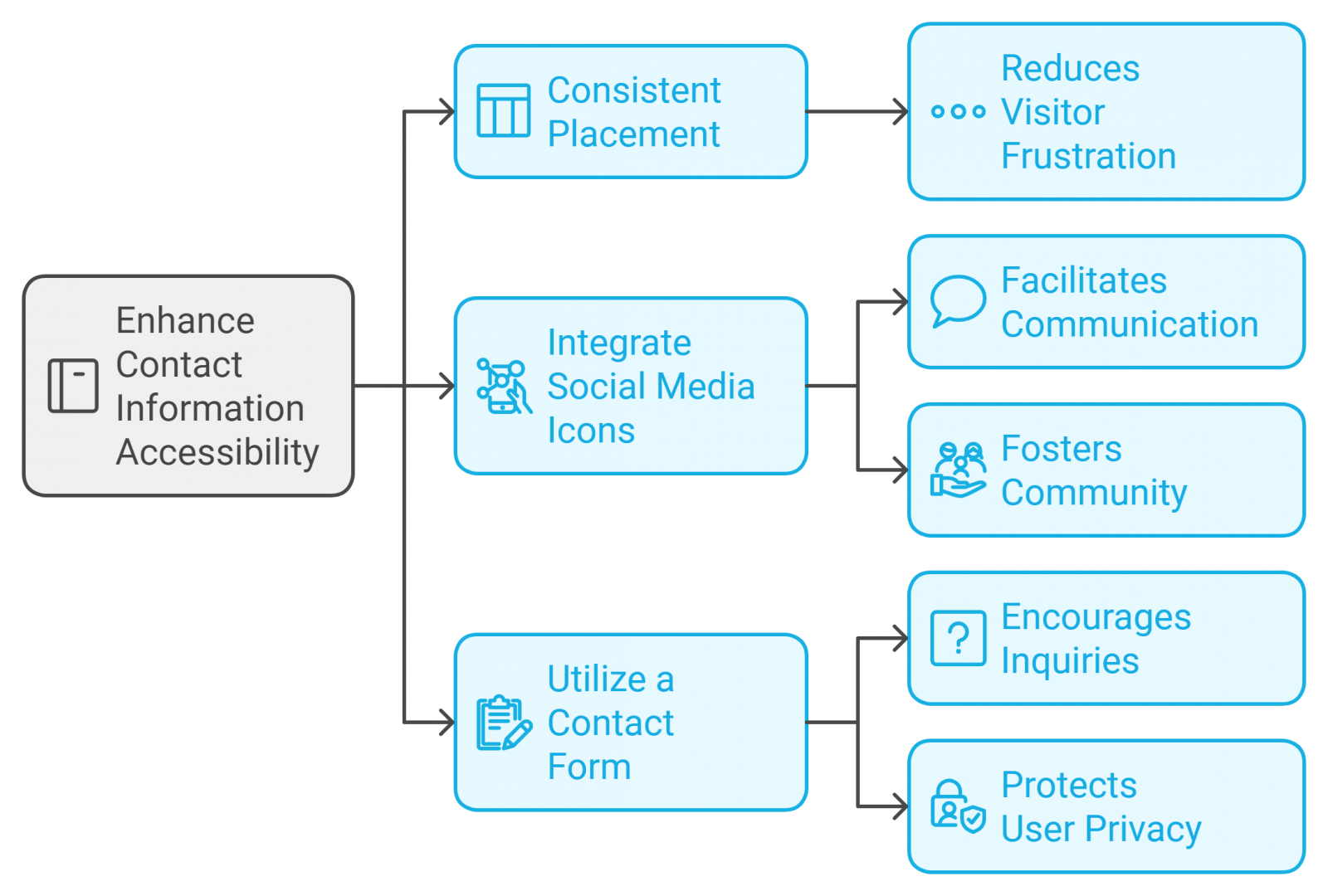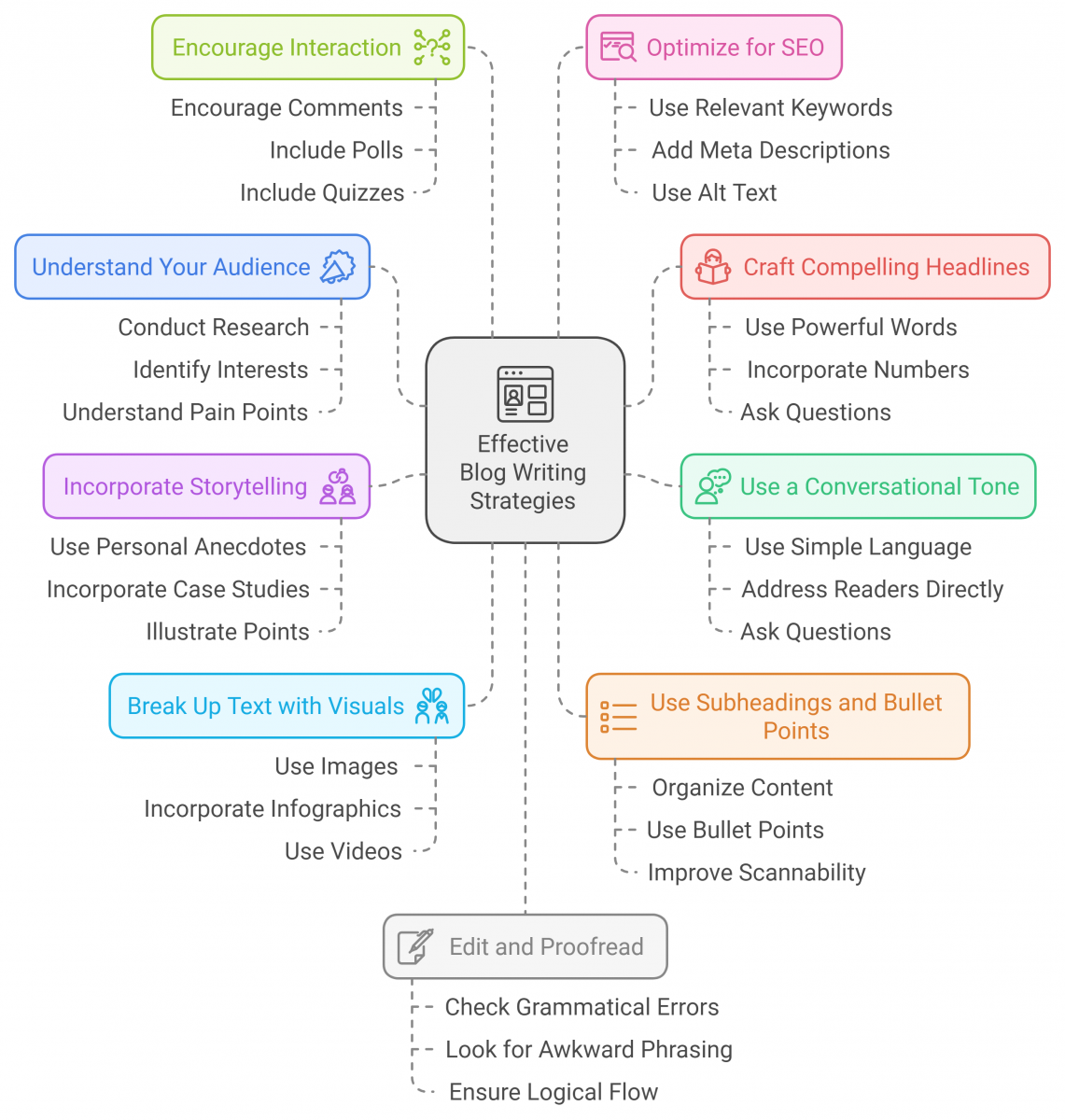Essential Features of Professional Website Design
October 1st, 2024

To craft a professional website, you need key features that stand out. Start with effective branding—display your logo prominently to build trust. Make user engagement easy by placing contact information where it's easily found and including strong calls-to-action that encourage interaction. Your content should be engaging and optimized for search engines, keeping visitors interested. Focus on a responsive design for seamless use across devices, and ensure fast loading times to enhance user satisfaction. Lastly, don't forget robust security measures. There's much more to explore about creating the perfect professional web presence that can elevate your online impact.
Branding Essentials
When building your professional website, it's essential to showcase your brand name and logo prominently on the home page, as this instantly establishes trust and credibility with visitors. Your brand name is the first thing users will notice, so make it memorable. A personalized, concise domain name that reflects your brand reinforces professionalism and keeps you top-of-mind.
Additionally, integrating comprehensive tools for business growth can enhance your online presence further.
Next, consider hiring a graphic designer to create an eye-catching logo that embodies your brand's essence. A well-designed logo is one of the most effective branding elements, as it significantly enhances brand representation and recognition.
Consistency is key. Utilize effective branding elements, such as color schemes and typography, to create a cohesive identity across all pages. This approach not only sets you apart from competitors but also fosters a sense of familiarity.
When users recognize your brand and feel a connection to it, customer loyalty flourishes.
Ultimately, strong branding isn't just about aesthetics; it's about crafting an experience that resonates with your audience. Invest in these branding essentials to build a memorable online presence that attracts and retains customers.

User Engagement Features
Your website's user engagement hinges on how easily visitors can connect with you. By strategically placing contact information, crafting effective calls-to-action, and integrating social media links, you create a seamless experience that invites interaction.
Additionally, implementing high-quality content can enhance your professional image and attract more clients, while local business foundation and design helps in converting visitors into leads.
These features not only reduce frustration but also foster a sense of community around your brand.
Contact Information Placement
Effective contact information placement is crucial for enhancing user engagement on a website. When your visitors can easily find ways to connect, they're more likely to trust your brand and feel confident in their decision to engage.
Here are three key strategies to accomplish this:
- Consistent Placement: Position your contact information in the header or footer of every page. This makes it readily accessible, reducing visitor frustration and keeping the lines of communication open.
- Integrate Social Media Icons: Link to your social media platforms. This not only facilitates communication but also allows users to engage with your brand across various channels, fostering a sense of community.
- Utilize a Contact Form: Instead of just sharing an email address, include a contact form. This encourages inquiries while protecting user privacy, making it easier for website visitors to connect without exposing personal information.

Effective Call-to-Action
Contact information and engagement features work hand-in-hand to create a seamless user experience. One crucial design element in achieving this is the effective call to action (CTA).
When strategically placed and clearly defined, CTAs can boost your conversion rates by up to 200%. To make your CTAs stand out, use contrasting colors, bold typography, and eye-catching shapes. This ensures that visitors easily identify the desired actions they should take.
Keep your CTAs concise and action-oriented. Phrases like "Subscribe," "Buy Now," or "Learn More" guide users toward specific interactions, enhancing their overall engagement.
Don't limit CTAs to one spot; incorporate them in the header, body, and footer of your webpage. This increases the chances of user interaction by providing multiple opportunities to engage.
Social Media Integration
Integrating social media into your website is a powerful way to enhance user engagement and broaden your reach. By incorporating social media icons and feeds, you create an inviting space for visitors to interact with your brand. This not only boosts engagement but also cultivates a community around your content.
Consider these key strategies for effective social media integration:
- Social Media Icons: Place easily accessible icons in your footer, ensuring they're visible without cluttering the user experience (UX).
- Live Feeds: Display social media feeds to keep your site dynamic, encouraging visitors to follow your brand and stay engaged with fresh content.
- Streamlined Login Options: Allow users to sign up or comment using their social media accounts; 86% of users prefer this method, making engagement seamless.
Content Strategy
Crafting engaging blog content is crucial for capturing your audience's attention and keeping them coming back for more.
By implementing SEO optimization techniques, you can ensure your content not only resonates but also ranks well in search results.
This strategic approach transforms your website into a valuable resource that meets user needs while driving traffic.
Engaging Blog Content
When you focus on creating engaging blog content, you open the door to establishing thought leadership and driving valuable traffic to your website.
A well-maintained blog not only showcases your expertise but also enhances your brand visibility through search engines.
To captivate your audience effectively, consider these key elements:
- Quality Content: Ensure your posts are original, concise, and engaging. Avoid jargon to resonate with your audience.
- Regular Updates: Fresh, frequently updated content keeps visitors interested and helps improve your search rankings.
- Visual Media: Incorporate videos and infographics to enhance engagement. Content with relevant visuals receives 94% more views than text-only.

SEO Optimization Techniques
SEO optimization techniques are essential for any successful content strategy, as they can elevate your website's visibility and drive organic traffic. By using relevant keywords in your titles and meta tags, you're not just optimizing for search engines; you're also enhancing user experience (UX) for your visitors.
When your site is easy to navigate, users stick around longer, boosting your chances of converting them into loyal followers or customers.
Consider implementing pillar pages and topic clusters to establish authority in specific subject areas. This structured approach doesn't just improve your search engine ranking; it also guides users through your content seamlessly.
Regularly updating your website with fresh, relevant information signals to search engines that your site is active, which is crucial for maintaining high ranks.
Don't forget about images! Optimizing them with alt tags and descriptive filenames can significantly enhance your visibility in image searches.
Lastly, leverage analytical tools to monitor user behavior and adjust your content strategy accordingly. This data-driven approach ensures your website design evolves to meet user needs while continuously improving your Search Engine Optimization efforts.
User Experience Design
Focusing on user experience design is essential for creating a website that truly connects with visitors. A great UX isn't just about aesthetics; it's about functionality that makes your site easy to navigate.
With 94% of visitors preferring straightforward navigation, your design should prioritize intuitive navigation. The essential elements include:
- Responsive web design: Ensure your website looks and functions seamlessly on all devices, especially for mobile users.
- Clear calls to action (CTAs): Guide users toward desired interactions with compelling CTAs that encourage clicks and conversions.
- Logical hierarchy: Use consistent design elements to enhance understanding of your site layout, making it easier for users to locate desired content.
Trust-Building Elements
Building trust with your website visitors is crucial for fostering long-term relationships and enhancing customer loyalty. To achieve this, incorporate essential trust-building elements into your design.
Start with an About Us page that tells your brand's story, mission, and values. This connection can significantly enhance customer trust.
Next, include team member information and images. By humanizing your brand, you make it relatable, allowing visitors to feel a personal connection.
Don't overlook the power of customer testimonials and reviews—79% of consumers trust online reviews as much as personal recommendations. Displaying authentic feedback builds credibility and encourages potential customers to engage with your offerings.
A well-structured FAQ section is another key component. It addresses common inquiries proactively, reducing the need for repetitive customer service interactions and demonstrating your attentiveness to user needs.
Finally, implementing robust security measures, like SSL certificates, reassures visitors that their data is safe. In a world where security is paramount, these measures are vital for establishing trust and encouraging users to explore your site freely.
Technical Functionality
Establishing trust isn't just about the content on your website; it's also about how well the site functions. When users explore your site, they expect a seamless experience that promotes engagement and satisfaction. Technical functionality plays a critical role in this, ensuring that your website meets user needs effectively.
Here are key aspects to focus on:
- Responsive Design: With over half of internet traffic coming from mobile devices, your site must adapt smoothly to different screen sizes, using fluid grids and flexible images.
- Fast Loading Times: A mere 2-second delay can spike bounce rates by 103%. Optimize your site for speed to keep users on board and enhance retention.
- Robust Search Functionality: About 30% of users use search features when available. Implementing an effective search can boost engagement and conversion rates.
Additionally, regular security audits and the integration of third-party tools like payment processors will further elevate user experience.
Security and Compliance
When it comes to your website, security and compliance shouldn't be an afterthought; they're essential to creating a trustworthy environment for your users. By implementing SSL certificates, you encrypt data transmitted between users and your server, significantly enhancing security and building trust.
Regular security audits and vulnerability assessments are crucial for identifying weaknesses in your infrastructure, ensuring that your site remains robust against potential threats.
Compliance with regulations like GDPR not only protects user data but also helps you avoid hefty fines, which can reach up to 4% of your global annual revenue for violations. Incorporating multi-factor authentication (MFA) adds another layer of security, requiring users to verify their identity through multiple means, thus minimizing unauthorized access.
Don't underestimate the power of clear privacy policies. By transparently outlining how you collect, use, and protect user data, you foster trust and improve the overall user experience (UX).
Ultimately, prioritizing security and compliance isn't just about avoiding risks; it's about empowering your users to explore your site with confidence, knowing their information is safeguarded. Make these elements integral to your design, and watch your audience thrive.
Final Thoughts
In crafting your professional website, you'll find that the blend of branding, user engagement, and technical functionality isn't just coincidental—it's essential. Each feature plays a part in creating a seamless experience for your visitors. When you prioritize trust and security, you're not just building a site; you're forging connections. So, as you design, remember that every element counts. With the right strategies in place, your website can transform visitors into loyal advocates, all while looking effortlessly professional.